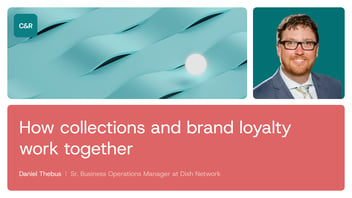Covid-19 fundamentally changed the debt collection and recovery process – but not exactly as the industry expected it to. While more consumers fell behind or defaulted on their debts because of pandemic-related financial hardship, an anticipated ‘tsunami of debt’ failed to materialize.
A combination of curbed household spending and government stimulus during lockdowns meant default rates were lower than expected. However, collections teams still experienced significant change – with more customer centric collections processes needing to be quickly implemented in order to best support customers’ financial wellbeing and maximize collection performance.
The debt landscape continues to change quickly in 2022. High levels of inflation have sparked cost of living crises in many economies, while the extra debt accumulated during the pandemic is beginning to stress millions of people. With the prospect of a debt tsunami once again looming large, organizations must use the learnings of the pandemic to make their collections processes fully customer centric.
How has the pandemic affected the collections process?
The onset of the pandemic forced collections teams to adapt their approach – with more customers than ever at risk of defaulting on their debts because of reductions to their incomes that occurred almost overnight.
Key changes to collections processes included:
- Moves to identify the most vulnerable customers. Collections teams needed to become more proactive in identifying the customers most at risk of defaulting. Using a host of metrics including credit reliance, credit stress and changes to income helped organizations prioritize the highest-risk individuals. It’s also crucial that assessments like these take place at an account level, and don’t just focus on individual debts.
- Segmenting customers to ensure the best approach for each persona. Once a hierarchy of risk is established, teams can segment their collections approach for each type of customer. Personas should be created that take into account customers’ need for advice and assistance as well as their risk level.
- Introducing a truly omnichannel approach. Collections performance and customer satisfaction can be greatly improved by choosing the right channel for each customer. By utilizing the data at their disposal, collections departments can discover the right combination of communication channels for each persona.
What all of these changes have in common is that they center the customer as the most important part of the collection process – both when it comes to identifying the people most in need of help, and improving the experience of every individual. Customer centric processes are more empathetic, and better accommodate the unique debt profiles of each customer.
While the industry has been adapting its practices in the direction of customer centricity for some time, the pandemic undoubtedly accelerated this shift.
How can collections teams ensure customer centric collections post-pandemic?
Economic conditions post-pandemic look set to cause a fresh wave of challenges for collection and recovery teams.
Inflation has skyrocketed in 2022 – hitting a 40 year high of 9.1% – due to a combination of factors including the war in Ukraine and demand outstripping supply as the last Covid-19 restrictions were dropped. Coupled with stagnating wages, and increased rates of household borrowing during the pandemic, organizations are bracing themselves for increased default rates.
Building on the lessons of the pandemic by introducing more customer-centric processes will help collections departments respond to a predicted influx of customers – many of whom have never been in significant debt before.
Tailored approaches for individual customers
The notion of a one-size-fits-all approach to debt collection has long been discarded by collections teams, but there is still so much more they can do to adapt their strategies according to the needs of the customer.
Segmenting customers based on their risk profile is only the start – how each group is engaged is the most important factor. For instance, enabling self-service works for many, but customers who profile as needing more assistance may benefit from the human touch.
It should be simple to tweak contact strategies for individual customers based on their unique circumstances based on available data.
The benefits of working closely and collaboratively with customers have grown past the pandemic. For businesses, it allows them to maintain their collection performance and build loyalty through memorable and personal interaction with a brand. For customers, it provides them with the support and guidance they need to manage their specific financial situation.
Choosing the right collections platform
To achieve this level of data-driven flexibility in the collections process, teams require a platform that is capable of delivering it. Key to this is centralized data.
Platforms like Debt Manager from C&R Software make centralizing data much more straightforward. By storing information including current debt, debt history, contact preferences and much more in one place, organizations are able to better visualize and compare the debt profiles of a single customer, group of customers, or their entire customer base. This enables collections teams to make data-driven decisions when it comes to forming communication strategies.
But this is only one aspect of the importance of your collections platform. Equally important is how customers engage with it. An intuitive platform will center self-service – helping the majority of customers easily navigate through the collections process – while helping collection teams better manage their resources.
The pandemic has forever changed the way we see debt collection
It has proven beyond all doubt that placing the customer as a first priority is the key to safeguarding their financial wellbeing and maximizing collection performance.
Industry-leading Debt Manager from C&R Software is a powerful platform that enables organizations to accurately identify the most at-risk customers and create data-driven communication strategies, catering to the requirements of each customer group. This offers customers the ability to more efficiently manage their debt.
Is it time to make your collection processes more customer centric? Contact us today to learn how we can help you build a more tailored experience for your customers’ individual needs.






